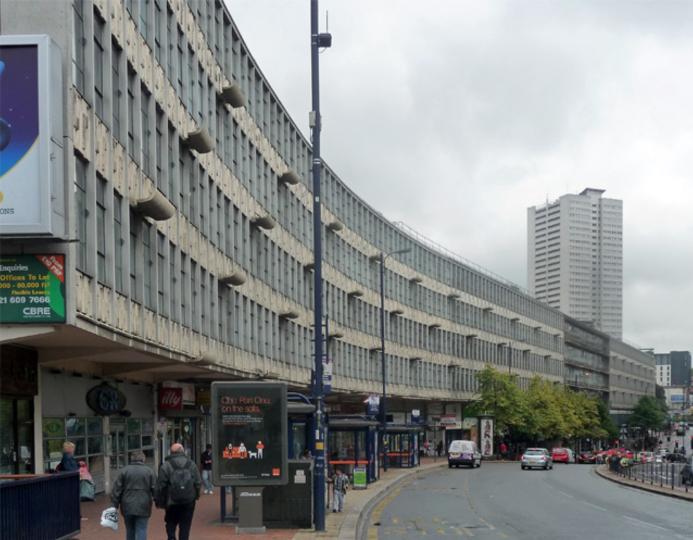Fight to save Brutalist Ringway Centre
The future of Birmingham’s Ringway Centre, a 1960s Brutalist office block, hangs in the balance as campaigners launch a legal bid to prevent its demolition.
The six-storey building on Smallbrook Queensway, designed by James Roberts, is slated to be replaced by three residential apartment blocks. However, the Save Smallbrook coalition is pushing to preserve and repurpose the structure, arguing that it is "an irreplaceable piece of Birmingham history."
An architectural style that emerged in the mid-20th century, Brutalism is characterised by its bold, rugged, and raw appearance, often using exposed concrete.
Notable for its functional and minimalist aesthetics, Brutalist architecture became prominent in post-war Britain, with many buildings designed to serve public and social functions. The Ringway Centre, with its distinctive curved facade, is a significant example of this style in Birmingham.
Constructed in the 1960s, the Ringway Centre was part of Birmingham’s post-war redevelopment, designed by James Roberts, who also created The Rotunda on New Street. Over the decades, the building has become a familiar landmark in the city centre.
Campaign to save the Ringway Centre
The Save Smallbrook coalition, which includes groups like the Birmingham Modernist Society and Brutiful Birmingham, lodged an application for a judicial review at the High Court on 2 May 2024. They are challenging the city council's decision to approve the demolition plan in February.
Speaking to the BBC, Mary Keating of Brutiful Birmingham said: "People who live in Birmingham need to be approached, they need to have a discussion about what they want their city to look like, and do they want their city to just be hundreds of tower blocks?"
Dr Michael Dring, a lecturer in architecture at Birmingham City University, supports the campaign and suggests the building could be retained for mixed-use purposes. "A counter-proposal would see the building retrofitted, keeping the existing structure and reanimating the ground floors with retail units," he explains.
Architect John Christophers, in an interview with the BBC, expressed his concern over Birmingham's rapid development at the expense of its architectural heritage. "If we just rip down everything and we put up the tallest skyscrapers that we can, then we would have destroyed our city. The Ringway Centre is an irreplaceable piece of Birmingham history," he says.
Student proposals
At a recent graduate show for the Birmingham School of Architecture and Design, students presented designs reimagining the Ringway Centre as a cultural hub.
Masters student Widuri Clare’s project, "Meet By The Ramp," proposes transforming the building into a space featuring an indoor garden, food court, playground, and pharmacy, aiming to bridge the perceived divide the building creates in the city.
Third-year student Jaspal Mond’s project, "Atellier's Yard," envisions the Ringway Centre as a space that integrates art and culture, bridging the gap between Birmingham’s Chinese Quarter and the Gay Village. "It would be a real shame to lose the Ringway Centre, because there’s a lot of really intricate details that make this building what it is," Mond says.
Mohid Ullah Khan’s project suggests adding a companion building in front of the Ringway Centre, preserving the original structure. "Why should we tear down something that’s been a part of Birmingham history for so long?" he asks, advocating for the retrofitting and celebration of the existing building.
Legal challenge
As the legal challenge progresses, the future of the Ringway Centre remains uncertain. Campaigners and supporters continue to advocate for the preservation and adaptive reuse of this iconic example of Brutalist architecture.
Their efforts highlight the ongoing debate about the value of architectural heritage and the impact of new developments on the character and history of Birmingham.







